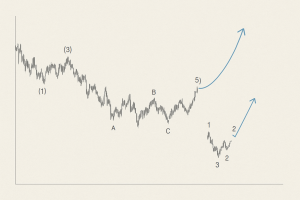Introduction
In the ever-evolving world of forex trading, automation has emerged as a game-changer, allowing traders to execute trades with greater precision and less emotional involvement. This comprehensive guide will explore the ins and outs of automated forex trading, detailing the best tools and strategies to help you achieve success in this dynamic market.
Understanding Automated Forex Trading
Automated forex trading involves using software programs known as trading robots or expert advisors (EAs) to execute trades on your behalf. These systems are designed to analyze market data, identify trading opportunities, and execute trades based on predefined criteria. The primary advantage of automated trading is that it removes emotional decision-making, allowing for consistent and disciplined trading strategies.
Benefits Of Automated Forex Trading
Emotional Detachment: Automated trading systems operate based on logic and algorithms, eliminating the emotional biases that can lead to poor trading decisions.
Consistency: Trading robots follow a set of predefined rules without deviation, ensuring consistent execution of trading strategies.
Speed and Efficiency: Automated systems can analyze market conditions and execute trades much faster than a human trader, taking advantage of fleeting opportunities.
24/7 Trading: Automated systems can operate around the clock, taking advantage of global market movements regardless of time zones.
Key Tools For Automated Forex Trading
To maximize the benefits of automated forex trading, it’s essential to use the right tools. Here are some of the top tools for successful automated trading:
MetaTrader 4/5: MetaTrader is one of the most popular trading platforms, offering robust support for automated trading. It allows users to create, test, and deploy trading robots with ease.
Expert Advisors (EAs): These are scripts written in the MQL programming language that automate trading strategies. EAs can be customized to suit individual trading styles and risk preferences.
VPS Hosting: A Virtual Private Server (VPS) ensures that your trading platform remains operational 24/7, minimizing downtime and enhancing execution speed.
Backtesting Software: Tools like Forex Tester allow traders to test their automated strategies against historical data, refining them for better performance.
Market Analysis Tools: Automated trading requires accurate and timely market data. Tools like TradingView and Bloomberg Terminal provide comprehensive market analysis and real-time data feeds.
Developing An Automated Trading Strategy
Creating a successful automated trading strategy involves several key steps:
Define Your Goals: Determine what you want to achieve with your automated trading system. Are you looking for steady, long-term gains or high-frequency trading profits?
Select a Trading Style: Choose a trading style that suits your risk tolerance and market preferences. Popular styles include scalping, day trading, and swing trading.
Develop Your Strategy: Based on your goals and trading style, develop a set of rules that your trading robot will follow. This includes entry and exit points, stop-loss and take-profit levels, and risk management parameters.
Test Your Strategy: Use backtesting software to test your strategy against historical data. This will help you identify any weaknesses and make necessary adjustments.
Deploy and Monitor: Once you are confident in your strategy, deploy it on a live account using a VPS for continuous operation. Regularly monitor performance and make adjustments as needed.
Common Pitfalls In Automated Forex Trading
While automated trading offers numerous advantages, it is not without risks. Here are some common pitfalls to avoid:
Over-Optimization: Excessive tweaking of your trading strategy to fit historical data can lead to over-optimization, resulting in poor performance in live trading.
Neglecting Risk Management: Automated systems must include robust risk management rules to protect your capital from significant losses.
Ignoring Market Conditions: Automated systems can struggle in volatile or unpredictable markets. It’s crucial to regularly review and adjust your strategy to adapt to changing conditions.
Technical Failures: Ensure your VPS and trading platform are reliable and have minimal downtime. Technical failures can lead to missed opportunities or unplanned trades.
Conclusion
Automated forex trading can be a powerful tool for traders looking to enhance their efficiency and consistency. By understanding the benefits and potential pitfalls, and by using the right tools and strategies, you can harness the power of automation to achieve your trading goals. Whether you are a novice trader or an experienced professional, automated trading offers a pathway to greater success in the dynamic world of forex.



